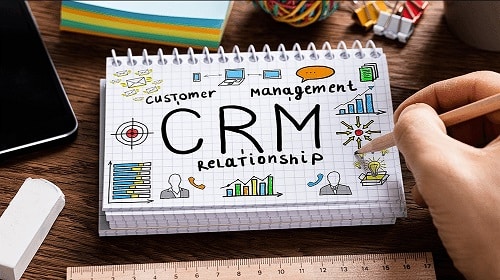As businesses expand their customer base, they face a growing challenge of maintaining effective communication with their customers. Customers today are more demanding and expect personalized experiences from businesses. This is where Customer Relationship Management (CRM) comes in. By leveraging CRM, businesses can optimize customer engagement, improve customer retention, and increase sales. In this article, we will explore how businesses can optimize customer engagement with CRM.
Introduction to CRM
CRM is a strategy and technology that helps businesses manage their interactions with customers, prospects, and partners. It involves using software applications to collect, store, and analyze customer data, which can be used to improve customer engagement, loyalty, and retention. CRM solutions can be customized to fit the needs of different types of businesses, from small businesses to large enterprises.
The Benefits of CRM for Businesses
CRM can benefit businesses in many ways, including:
- Improved Customer Satisfaction: By using CRM, businesses can better understand their customers’ needs and preferences, which can help them provide more personalized experiences and improve customer satisfaction.
- Increased Sales: CRM can help businesses identify sales opportunities, automate sales processes, and track sales performance, which can help increase revenue and profits.
- Improved Marketing: CRM can help businesses target their marketing efforts more effectively, by segmenting customers based on their preferences, behavior, and demographics.
- Enhanced Customer Retention: CRM can help businesses identify at-risk customers and proactively address their concerns, which can help reduce churn and improve customer retention.
- Better Collaboration: CRM can facilitate collaboration among different departments, by providing a centralized database of customer information that can be accessed by sales, marketing, and customer support teams.
Types of CRM
There are several types of CRM solutions available, including:
- Operational CRM: This type of CRM is focused on automating and improving customer-facing processes, such as sales, marketing, and customer service.
- Analytical CRM: This type of CRM is focused on analyzing customer data to gain insights into customer behavior, preferences, and needs.
- Collaborative CRM: This type of CRM is focused on facilitating collaboration among different departments and teams, by providing a centralized database of customer information that can be accessed by all.
Implementing CRM
Implementing CRM requires careful planning and execution. Here are some steps to follow:
- Define Your Objectives: Identify what you want to achieve with CRM, such as improving customer satisfaction, increasing sales, or enhancing customer retention.
- Choose the Right CRM Solution: Research and evaluate different CRM solutions based on your business needs, budget, and technical requirements.
- Customize Your CRM Solution: Customize your CRM solution to fit the unique needs of your business, such as adding custom fields, workflows, or reports.
- Train Your Employees: Train your employees on how to use the CRM solution effectively, and encourage them to use it regularly.
- Monitor and Evaluate Performance: Monitor and evaluate the performance of your CRM solution regularly, and make adjustments as needed.
Integrating CRM with Other Systems
Integrating CRM with other systems, such as marketing automation, e-commerce, and accounting, can help businesses gain a more comprehensive view of their customers and improve their overall business processes. Here are some best practices for integrating CRM with other systems:
- Identify the Systems to Integrate: Identify the systems that you want to integrate with your CRM solution, based on your business needs and goals.
- Choose the Right Integration Method: Choose the integration method that best suits your business needs and technical capabilities, such as using pre-built connectors, APIs, or custom integration solutions.
- Test and Validate Integrations: Test and validate integrations to ensure that data is flowing correctly between systems and that the integrations are working as expected.
- Monitor Performance: Monitor the performance of your integrations regularly, and troubleshoot any issues that arise.
Best Practices for Optimizing Customer Engagement with CRM
To optimize customer engagement with CRM, businesses should follow these best practices:
- Personalize Customer Interactions: Use customer data to personalize interactions with customers, such as by addressing them by name, providing personalized recommendations, and tailoring marketing messages to their preferences.
- Engage Customers Across Multiple Channels: Engage customers across multiple channels, such as email, social media, and SMS, to provide a seamless and consistent customer experience.
- Provide Timely and Relevant Support: Provide timely and relevant support to customers, such as by responding to inquiries promptly, providing self-service options, and offering proactive support.
- Measure and Analyze Customer Engagement: Measure and analyze customer engagement regularly, using metrics such as customer satisfaction, customer churn, and customer lifetime value, to identify areas for improvement.
- Continuously Improve Your CRM Strategy: Continuously improve your CRM strategy based on customer feedback, changing market conditions, and emerging technologies.
Frequently Asked Questions (FAQs)
Q: What is CRM? A: CRM stands for Customer Relationship Management, which is a strategy and technology that helps businesses manage their interactions with customers, prospects, and partners.
Q: How can CRM benefit my business? A: CRM can benefit your business in many ways, including improved customer satisfaction, increased sales, improved marketing, enhanced customer retention, and better collaboration among different departments.
Q: What are the types of CRM solutions? A: The three types of CRM solutions are operational CRM, analytical CRM, and collaborative CRM.
Q: What are the best practices for optimizing customer engagement with CRM? A: The best practices for optimizing customer engagement with CRM include personalizing customer interactions, engaging customers across multiple channels, providing timely and relevant support, measuring and analyzing customer engagement, and continuously improving your CRM strategy.
Q: How do I integrate CRM with other systems? A: You can integrate CRM with other systems by choosing the right integration method, testing and validating integrations, and monitoring performance regularly.
In conclusion, businesses can optimize customer engagement by implementing CRM solutions that help them collect, store, and analyze customer data, and use it to improve customer experiences. By following best practices for optimizing customer engagement with CRM, businesses can improve customer satisfaction, increase sales, and enhance customer retention.
Read More :
Originally posted 2024-04-01 22:08:00.

